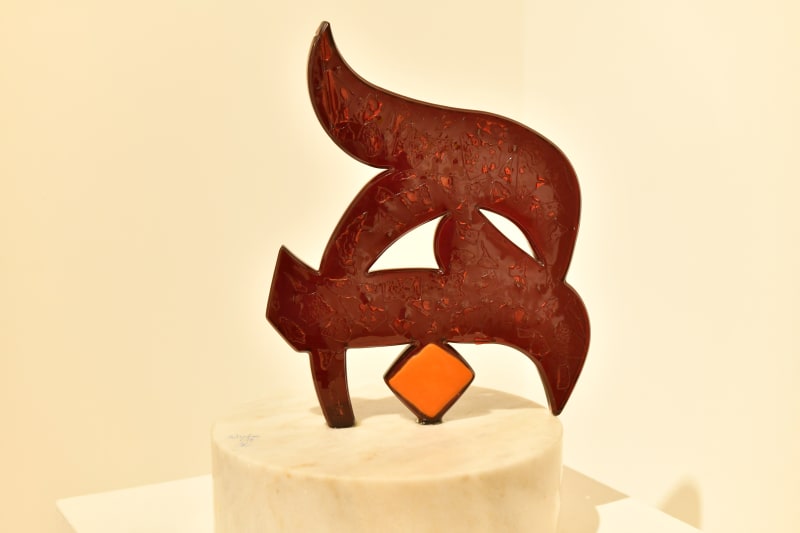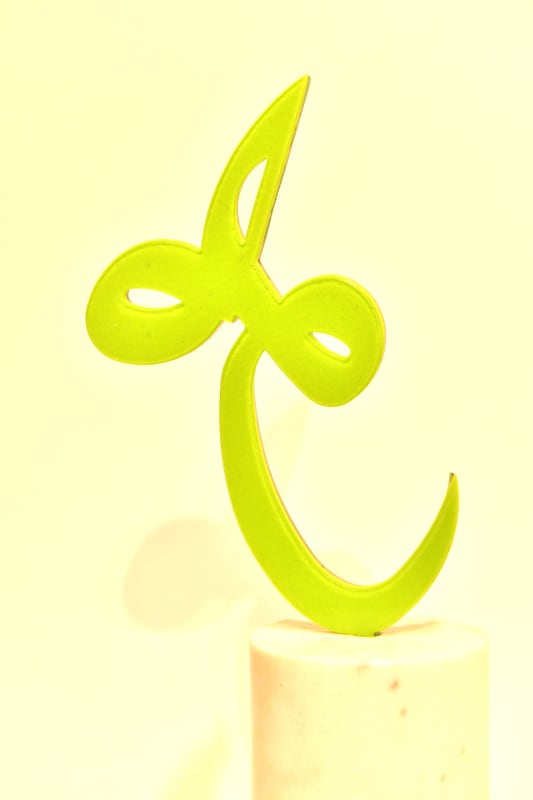Hob, Murano glass sculpture
2019
Him, Murano glass sculpture
2019
- X
- Tumblr
“Love” needs no explanation. In every language and among every people “love” means all that is good, beautiful and sacred. I dream of spreading love dust all over the world so that peace and harmony will engulf every one of us and happiness becomes our norm. – HRH Wijdan
Displayed on plinths around the gallery, Wijdan’s sculptural works lie gracefully around the space, the feminine curves of the lettering matching the soft, sweet connotations that most of us have about love. Each constructed out of layers of glass, the works are at once sheer and opaque, as the different pieces of glass – which often consist of colours placed on top of one another– form a dense mass. Like love, they are sheer, matching the purity and clarity of true love, leaving nowhere for anything to hide, and simultaneously opaque, in the sense that it is strong, powerful and everlasting.
Wijdan’s glass monuments each appear in the form of words: the Arabic for love, him, but also no. The sentimentality attributed to love seems pretty obvious, but what about the other two words? Him would suggest a great lover, the one spreading love. One person at the exhibition opening asked me who he is. Is he a divine power, or is he a lover? Whoever he is, he is obviously powerful, with the word often mirrored onto itself through its shadows, appearing as a calligraphic interpretation of a Rorschach inkblot test. At times, the design also looks like a mask that one might wear to a masked ball, shielding the eyes, teasing the lover as glances are exchanged across a busy room. And, at other times, the mirroring him looks like the delicate wings of a butterfly, something fragile, whimsical, and with the ability to fly, just like the fluttering that occurs in your stomach when you fall in love for the first time.
But what about the la, the no in Arabic? It is true that love is sometimes cruel. Love can be denied to us, it can end, it can be temporary and it can die. When we think about love, most of us prefer to think about the good that it can bring, choosing to ignore the fact that it can also be a source of pain. The appearance of a series of sculptures titled Lam Alif – literally the letters L and A in Arabic that create the word no– suggest a recognition that love is not always easy. Wijdan’s no’s appear like flames, sprouting from an invisible fire, escaping the heat of a love-filled relationship. Whoever or whatever they are saying “no” to, it is clear that it is all in the name of love.
Love is quite possibly the strongest emotion. It is soft and hard, clear and opaque, strong and fragile. In Opaque Transparency HRH Wijdan reminds us of its beauty, but also of its complexities.
Opaque Transparency: Wijdan in the Name of Love
Artmejo.com
21/09/2019
https://artmejo.com/opaque-transparency-wijdan-in-the-name-of-love/


